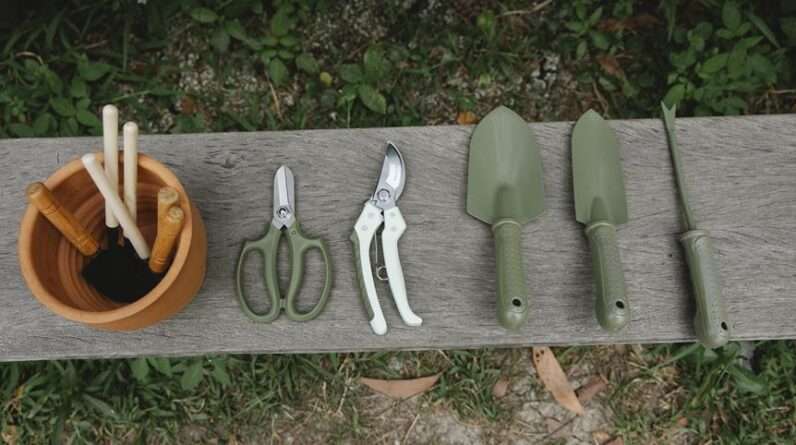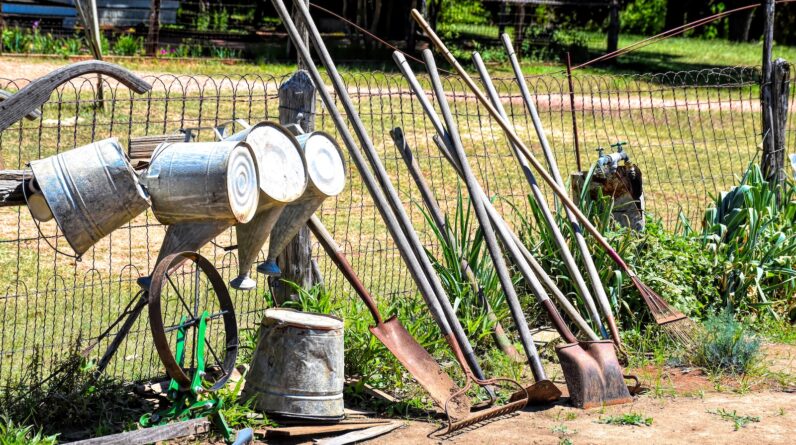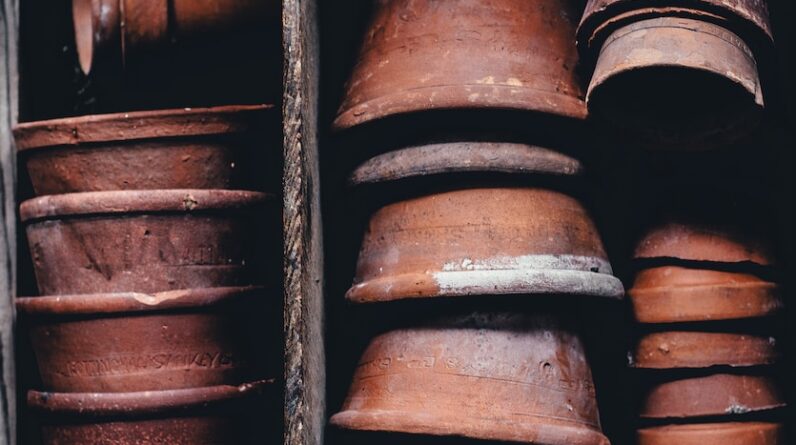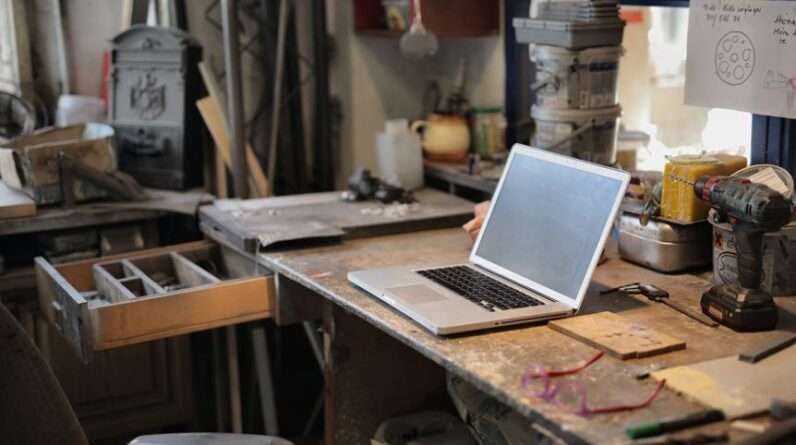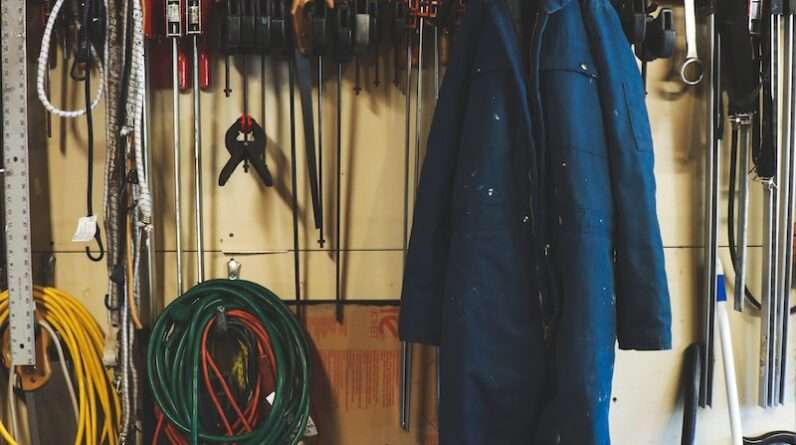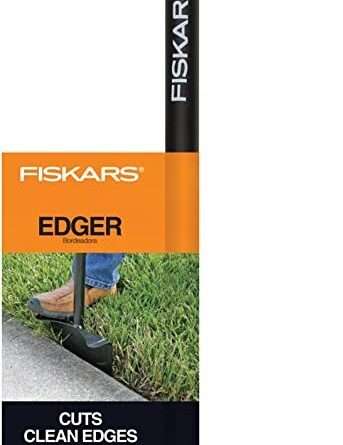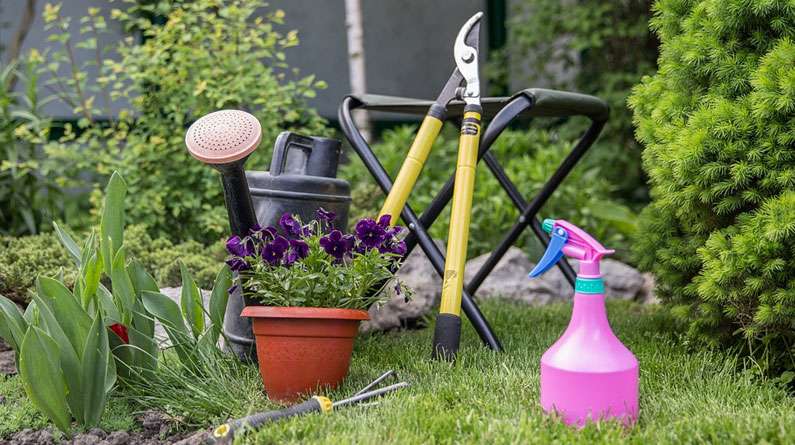
Landscaping can be a challenging task, especially for those who lack the necessary tools and equipment. Whether you are a professional landscaper or a DIY enthusiast, having the right basic landscaping tools can make all the difference. Investing in essential landscaping tools can save time, effort, and money in the long run.
By using the right basic landscaping tools, you can transform your garden or outdoor space into a beautiful and functional landscape. In this article, we will explore the essential landscaping tools that you need to get the job done efficiently. From shovels and spades to pruning tools and lawn mowers, we will cover the must-have tools for any gardener.
We will also discuss the importance of these tools and how they can help you achieve your landscaping goals. Whether you are a beginner or an experienced landscaper, this article will provide you with valuable information on the essential tools you need for your next landscaping project.
Shovels, Spades and Hoes
Let’s face it, you can’t get more basic landscaping tools than shovels, spades, and hoes.
Shovels are ideal for digging holes, lifting earth, and mixing compost.
Spades, on the other hand, are great for digging trenches and removing sod. They also come in handy when you need to move soil from one area to another.
Lastly, hoes are designed to break up compacted soil, weed, and harvest root vegetables.
In addition to their unique functionalities, shovels, spades, and hoes come in different shapes and sizes.
For instance, shovels can be square or pointed, while spades can be long-handled or short-handled. Hoes come in various shapes such as draw hoes, scuffle hoes, and stirrup hoes.
The choice of tool will depend on the specific needs of your garden or landscape.
In summary, shovels, spades, and hoes are essential landscaping tools that make maintaining a garden or landscape easier.
With their unique functionalities and different shapes and sizes, they are designed to meet the specific needs of your garden.
In the next section, we will discuss pruning tools, which are also important in maintaining and cultivating a garden or landscape.
Pruning Tools; Pruners, Shears and Loppers
When it comes to maintaining a garden or landscape, having the right pruning tools such as pruning shears and loppers can make the difference between a healthy, thriving garden and an overgrown, unmanageable mess.
Pruning shears are a versatile tool that can be used for a variety of tasks such as cutting small or large branches, harvesting vegetables and flowers, and even on toxic plants. They come in different sizes, so it is important to choose the right one for the job. For example, smaller pruning shears are ideal for cutting small branches and stems, while larger ones are better for thicker branches.
Loppers, on the other hand, are designed for larger branches and make quick work of harvesting plants such as grapes or blackberries. They have long handles that provide leverage, making it easier to cut through thicker branches. It is important to choose loppers with sharp blades and sturdy handles to avoid damaging the plant or causing unnecessary strain on your hands and wrists. Like pruning shears, loppers come in different sizes, so it is important to choose the right one for the job.
Investing in good pruning tools will not only save time, but it will also ensure that your plants are healthy and well-maintained. With the right tools, you can easily remove dead or diseased branches, shape your plants, and encourage new growth.
The next step in maintaining a well-kept garden is to ensure that your lawn is also properly maintained. This involves using the right lawnmowers and trimmers, which will be discussed in the next section.
Lawn Mowers and Trimmers
Efficient maintenance of a garden requires appropriate lawn mowers and trimmers, which can be selected based on factors such as lawn size and desired cut height. The cutting height of a mower should be adjusted to the appropriate level for the type of grass being grown. For example, Bermuda grass should be cut to a height of 1 to 1.5 inches, while fescue grass should be cut to a height of 2 to 3 inches. Choosing the right type of mower is also important. For large lawns, a ride-on mower or a self-propelled mower may be more convenient than a push mower.
- Consider the size of the lawn when selecting a mower. For small lawns, a push mower or an electric mower may be sufficient. For larger lawns, a ride-on mower or a self-propelled mower may be more efficient.
Choose a mower with the appropriate cutting height for the type of grass being grown. This will ensure a healthy lawn and prevent damage to the grass
Consider the type of engine when selecting a mower. Gas-powered mowers are more powerful but require more maintenance than electric mowers.
- Trimmers are essential for maintaining the edges of a lawn and trimming around obstacles such as trees and flowers. Choose a trimmer with a comfortable grip and adjustable head for ease of use.
Maintaining a well-manicured lawn requires the use of appropriate mowers and trimmers. The size of the lawn, the type of grass being grown, and the desired cutting height are all important factors to consider when selecting a mower. In addition, choosing a trimmer with a comfortable grip and adjustable head can make the job of maintaining the edges of the lawn and trimming around obstacles much easier. With the right tools, a beautiful lawn can be easily achieved.
Next, we will explore the importance of wheelbarrows and garden carts in landscaping.
Wheelbarrows and Garden Carts – Certainly Basic Landscaping Tools
Proper transportation of heavy materials and tools is crucial for maintaining and creating a garden, and wheelbarrows and garden carts provide a convenient and efficient solution. These tools are essential for moving soil, mulch, rocks, plants, and other landscaping materials around your yard. Both wheelbarrows and garden carts come in different sizes, materials, and styles to fit your specific needs.
A wheelbarrow consists of a single wheel, two handles, and a container for carrying materials. The container can be plastic or metal, and the size can range from 2 to 10 cubic feet. Wheelbarrows are great for moving heavy materials over short distances, and they are easy to maneuver around tight spaces. They can also be used as a temporary seat or table.
Garden carts, on the other hand, have two or four wheels and a flatbed for carrying materials.
They are larger and can hold more weight than wheelbarrows, making them a better option for larger gardens or yards.
Garden carts come in various designs, including foldable, collapsible, and detachable models, allowing for easy storage and transportation. They also offer better stability and control than wheelbarrows, making them ideal for carrying fragile or bulky items.
| Tool | Description | Pros |
|---|---|---|
| Wheelbarrow | A single-wheeled container with two handles for carrying materials | Easy to maneuver, great for short distances, can be used as a temporary seat or table |
| Garden Cart | A flatbed with two or four wheels for carrying materials | Larger and holds more weight than wheelbarrows, better stability and control, ideal for carrying fragile or bulky items |
Moving heavy materials and tools can be a daunting task, but with the help of wheelbarrows and garden carts, it can be done efficiently and with ease. These tools are essential for any gardener or landscaper, as they facilitate the movement of different materials and reduce the risk of injury. In the next section, we will discuss rakes and leaf blowers, which are also essential tools for maintaining a garden.
Rakes and Leaf Blowers
Rakes and leaf blowers are useful tools for maintaining a clean and tidy garden, as they facilitate the removal of debris and fallen leaves, which can cause damage to the lawn and plants if left unattended.
Rakes come in various sizes and shapes, and they are used for different purposes. Some of the most common types of rakes are leaf rakes, garden rakes, and thatch rakes. Leaf rakes are ideal for collecting fallen leaves, while garden rakes are best for leveling soil and removing debris. Thatch rakes, on the other hand, are designed to remove dead grass, roots, and other organic matter that can impede the growth of healthy grass.
Leaf blowers, on the other hand, use forced air to blow leaves, debris, and other yard waste into a pile, making it easier to collect and dispose of them. There are two main types of leaf blowers: gas-powered and electric. Gas-powered leaf blowers are more powerful and can handle heavy-duty tasks, while electric leaf blowers are better suited for smaller yards and lighter jobs. Additionally, leaf blowers can be handheld or backpack-style, depending on the user’s preference.
Should a leaf blower be included in a list of basic landscaping tools? Well, a rake is certainly more basic but, far from being “newfangled technology”, leaf blowers have now become more mainstream. Why give yourself unnecessary backache?
When using rakes and leaf blowers, it is important to wear personal protective equipment such as gloves, safety glasses, and dust masks to prevent injury and exposure to allergens. It is also important to follow the manufacturer’s instructions carefully and to store the tools in a safe and dry place after use. Proper maintenance, such as cleaning and sharpening the blades of rakes and checking the air filters and spark plugs of leaf blowers, can extend the lifespan of the tools and ensure optimal performance.
Next, we will discuss watering tools, which are essential for maintaining healthy plants and ensuring that the garden remains hydrated.
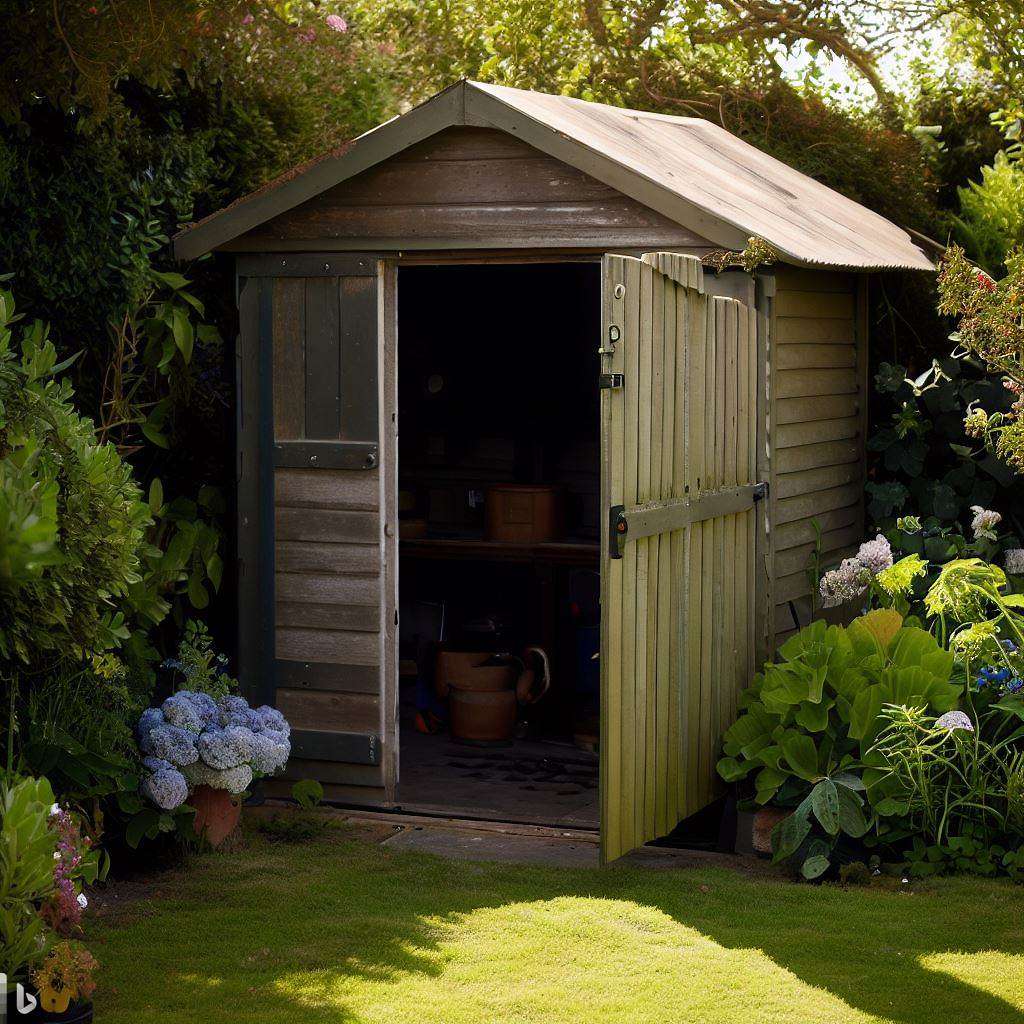
Watering Tools
Watering tools play a crucial role in maintaining the health and vitality of plants, as they provide the necessary hydration to counteract the potential damage caused by neglect or environmental stressors.
A watering can is a versatile tool that can be used for any type of garden and is ideal for watering individual plants or a smaller garden. It is also a great way to control the amount of water each plant receives and avoid over-watering.
For larger gardens, a hose with a timer may be necessary to ensure that all plants receive an adequate amount of water. A timer allows for precise control over the water delivery, which can be especially useful during periods of drought or when water restrictions are in place. Additionally, a hose reel can help keep the hose organized and prevent tangling, making watering tasks more efficient.
Investing in quality watering tools can save time, money, and effort in the long run, as it can prevent plant damage caused by over or under-watering. By providing the right amount of hydration, plants can thrive and produce more blooms, fruits, and vegetables. The right tools also allow gardeners to enjoy their garden more, as they can spend less time worrying about maintenance and more time enjoying the beauty and serenity of their outdoor space.
Next, we will explore the importance of soil testing equipment and how it can help ensure that plants receive the proper nutrients for optimal growth and health.
Soil Testing Equipment
Soil testing equipment plays a crucial role in ensuring that plants receive the necessary nutrients for optimal growth and health, and can help gardeners make informed decisions about fertilization and soil amendments. It may seem an odd thing to put into this round up but it certainly is one of the most basic landscaping tools.
By testing the soil, gardeners can determine the pH level, nutrient content, and texture of their soil, which can vary greatly depending on the region and type of vegetation being grown.
Some essential soil testing tools include:
- pH meter: This tool measures the acidity or alkalinity of the soil, which is important for determining which plants will thrive in that environment. Most plants prefer a slightly acidic soil with a pH level between 6.0 and 7.0.
- Soil nutrient test kit: This kit can identify the levels of nitrogen, phosphorus, and potassium in the soil, which are key nutrients for plant growth. Based on the results, gardeners can determine which fertilizers to use and in what quantity.
- Soil texture test kit: This kit determines the composition of the soil, including the ratio of sand, silt, and clay. This information is important for understanding how water and nutrients are absorbed and retained in the soil.
With the help of soil testing equipment, gardeners can make informed decisions about which plants to grow, how to fertilize and amend the soil, and how to ensure optimal growth and health.
By understanding the unique needs of their soil, gardeners can create a thriving and sustainable landscape that is both beautiful and functional.
Transitioning into the next section on safety gear and protective clothing, it is important to remember that proper equipment is not just limited to gardening tools.
Just as soil testing equipment can help gardeners make informed decisions, safety gear and protective clothing can help ensure their physical safety and comfort while working in the garden.
Hedge trimmer
A hedge trimmer is an essential basic landscaping tool that should be included in every homeowner’s arsenal. It is a powerful machine that helps you keep your hedges, bushes, and shrubs in shape. Hedge trimmers come in different types, including electric, gas-powered, and cordless models. They are designed to make your landscaping work easier by trimming and shaping your hedges and bushes with precision.
One of the main reasons why a hedge trimmer is a basic landscaping tool is that it helps you maintain the beauty and aesthetics of your home’s exterior. A well-trimmed hedge or bush adds a touch of elegance and symmetry to your landscape. With a hedge trimmer, you can easily trim and shape your hedges and bushes to create a uniform and neat look. This enhances the curb appeal of your property and gives it a well-manicured appearance.
Another reason why a hedge trimmer is a basic landscaping tool is that it helps you keep your hedges and bushes healthy. Overgrown hedges and bushes can become a breeding ground for pests and insects, leading to diseases that can spread to other plants in your garden. A hedge trimmer enables you to trim your hedges and bushes regularly, preventing them from becoming overgrown and unhealthy. This promotes healthy growth and ensures that your plants remain vibrant and beautiful.
In conclusion, a hedge trimmer is a versatile and indispensable landscaping tool that every homeowner should have. It helps you maintain the beauty and aesthetics of your property, promotes healthy growth of your plants, and makes your landscaping work easier and more efficient. Whether you have a small garden or a large property, investing in a hedge trimmer is a wise decision that will pay off in the long run.
Even more basic, however are smaller tools that you will often need for smaller jobs so let’s have a look at those.
Hand Tools
Hand tools are essential for any landscaper as they provide the necessary precision and accuracy required for maintaining a garden. For instance, pruning shears are necessary for the maintenance of shrubs and bushes. They allow gardeners to make precise cuts that help to encourage new growth and maintain the shape of the plants.
Another essential hand tool is the trowel. It is a versatile tool that can be used for planting, transplanting, and weeding. It is especially useful for digging small holes for seedlings or bulbs. Gardeners can use the trowel to remove weeds from small spaces without damaging surrounding plants.
In summary, hand tools are necessary for maintaining a garden. They provide precision and accuracy, making it easier for gardeners to maintain the shape of plants and encourage new growth. Additionally, they are versatile and can be used for a variety of tasks such as planting, weeding, and leveling soil. A garden rake, pruning shears, and trowel are essential hand tools that should be included in any landscaper’s toolkit.
Safety and protection are things to take seriously when working in the yard or garden. Let’s finish by taking a look at that.
Safety Gear and Protective Clothing
Safety is key when it comes to landscaping, as there are many risks involved in this type of work. While soil testing equipment is essential to ensure that the soil is healthy, safety gear and protective clothing are equally important to protect the landscaper from harm. So we must include these in a list of basic landscaping tools.
Gardening Gloves
Having the right protective gear can prevent injuries and accidents, allowing the landscaper to work confidently and efficiently. One of the most important pieces of safety gear for landscaping is a pair of gloves. Gloves protect the hands from blisters, cuts, and scrapes, as well as harmful chemicals and thorns. When choosing gloves, it is important to consider the type of work being done and choose a pair that is appropriate for the task. For example, thick leather gloves may be necessary for heavy-duty pruning jobs, while lightweight gloves with a good grip may be more appropriate for weeding.
Eye And Ear Protection
Other important safety gear includes eye and ear protection. Safety glasses or goggles protect the eyes from debris, chemicals, and flying objects, while earplugs or earmuffs protect the ears from loud noises such as lawn mowers or leaf blowers.
Other basic landscaping safety items to consider
It is also important to wear long pants and long-sleeved shirts to protect the skin from scratches, bites, and harmful chemicals. A hat and sunscreen can also provide protection from the sun’s harmful rays, which can cause skin damage and increase the risk of skin cancer.
In summary, safety gear and protective clothing are essential for landscaping work. Gloves, eye and ear protection, long pants and sleeves, hats, and sunscreen can all help prevent injuries and accidents, allowing the landscaper to work safely and efficiently. By investing in the proper safety gear, landscapers can help ensure that their work is not only productive, but also safe and enjoyable.
Conclusion – Basic Landscaping Tools
In conclusion, investing in the right landscaping tools can make all the difference in creating a beautiful outdoor space.
From shovels and hoes to pruning tools and lawn mowers, having the essential equipment on hand will save time and effort in the long run.
Garden carts and wheelbarrows are also crucial for transporting materials and plants, while rakes and leaf blowers make cleaning up a breeze.
It’s important to remember that landscaping can be a physically demanding task, so wearing appropriate protective gear is essential.
Just like a painter needs their brush and canvas, a gardener needs their tools to bring their vision to life.
With the right equipment, patience, and dedication, you can transform your backyard into a work of art, just like a sculptor chisels away at a block of stone to create a masterpiece.






